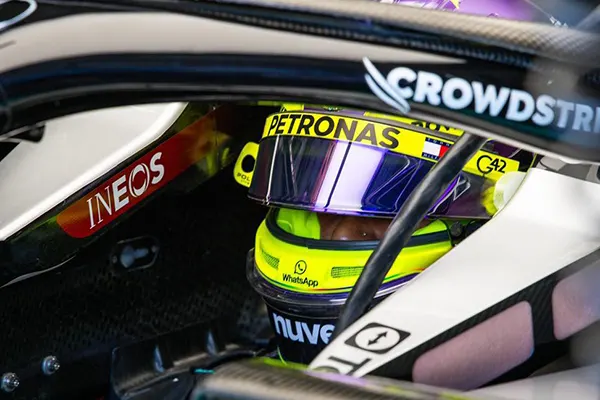Mercedes supports Lewis Hamilton’s bold setup experiments despite the risks, emphasizing the necessity of change for learning and improvement in their quest to master the W15’s performance.
Mercedes F1 continues to try to understand its car, the W15, as the car proves to be very temperamental. Andrew Shovlin, the track engineering director, acknowledged that some drastic setup changes were too risky, and that Lewis Hamilton had sometimes been a victim of his own decisions during the weekend.
“It’s mostly about getting to know the car better,” Shovlin told Auto Motor und Sport. “Lewis, in particular, is open to significant setup changes this year. He wants to learn more about how he can get the most out of the car.”
“He has been a victim several times. But if you don’t change anything, you learn nothing. It would be wrong to say ‘that’s the way it is, we have to live with it.’ The key is to balance the cars better so we don’t have to live with so many compromises.”
“We often solve one problem only to get another in return. The goal should be to have a strong front end without sacrificing rear stability and a car that handles well in slow corners without oversteering in fast corners.”
Limiting changes after the Sprint
Shovlin recounts how Mercedes sometimes ruined part of its weekends. This was the case in Shanghai, where Hamilton finished second in the Sprint but qualified 18th a few hours later. The engineer explains that the drivers saw potential improvements, but they created unforeseen problems.
“We were no longer able to validate the changes made between the Sprint and the qualifying session in the simulator. There wasn’t enough time for that. And what he had changed in the car caused too much understeer. He tried to solve one problem and created another.”
“During the Sprint, both drivers felt that many things on the cars could be improved, especially in slow corners. Both thought significant changes were necessary.”
“Both drivers then took different paths to learn more about the car’s behavior in terms of setup. The problem is that with such a change in setup, the driver hardly has time to get used to the effects.”
“There were practically only two laps in Q1. That’s why Lewis locked his wheels at the end of the straight. He expected different behavior. This had little to do with the setup itself, but rather with a different reaction due to the change in setup.”
“What did we learn from this experience? During Sprint weekends, where we go from the Sprint to qualifying, it’s not a good idea to make major changes, even if the driver feels there is still something to improve. It’s better to give him a car he knows and understands.”

Hamilton’s Risky Setup Changes Backed by Mercedes. Hamilton’s Risky Setup Changes Backed by Mercedes
- You may also like>Alonso Confident in Aston’s 2024 Progress
- Following us on Facebook and Twitter
